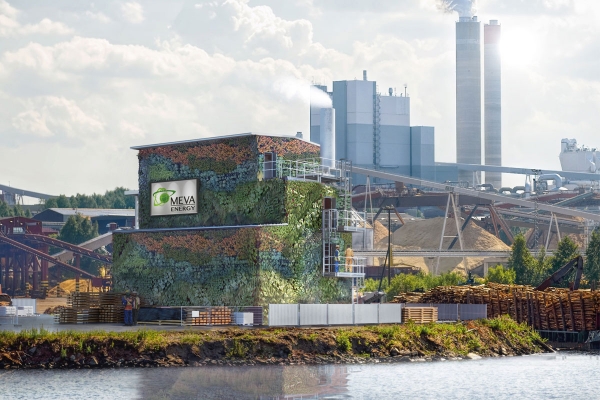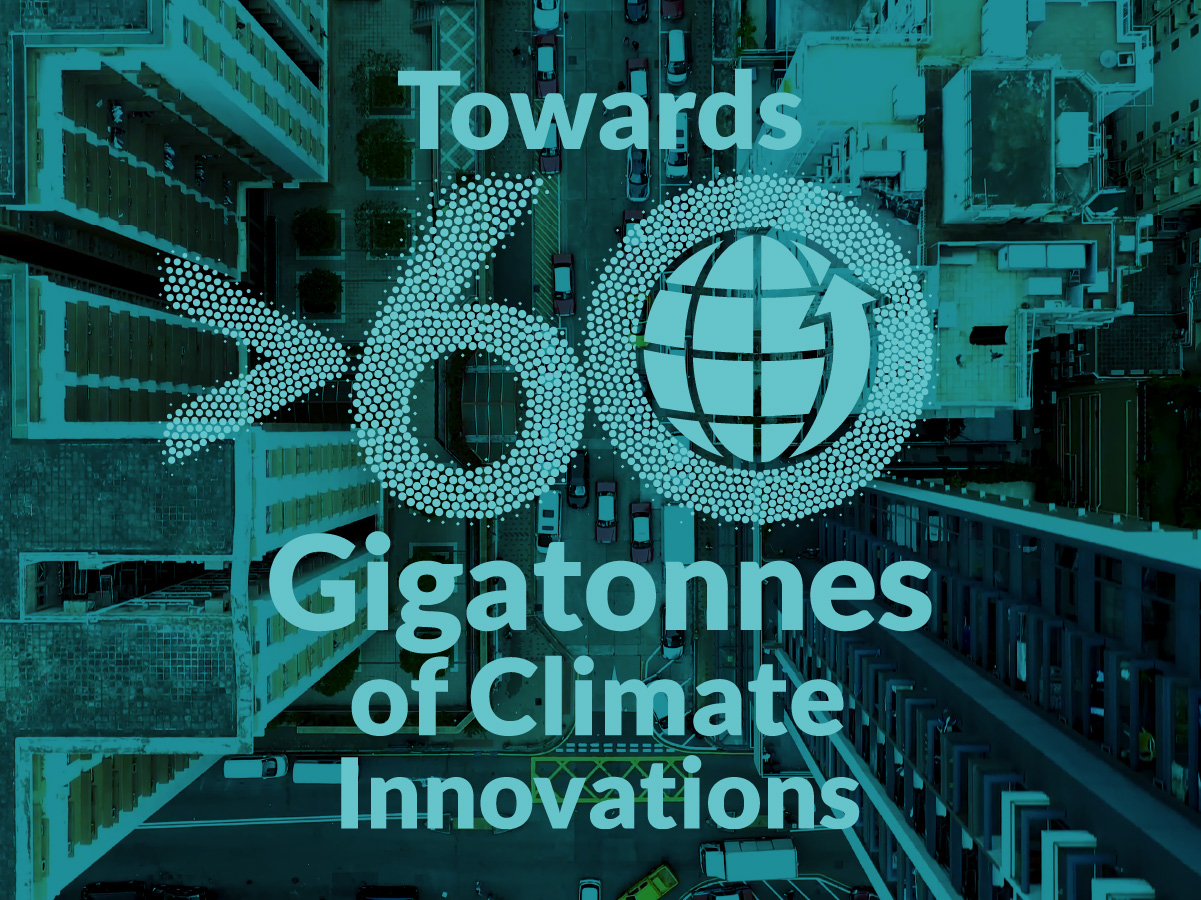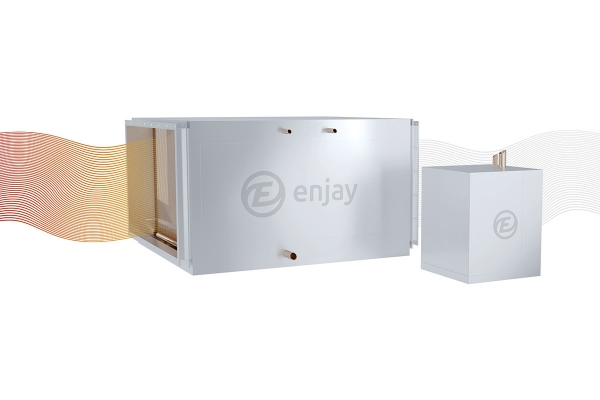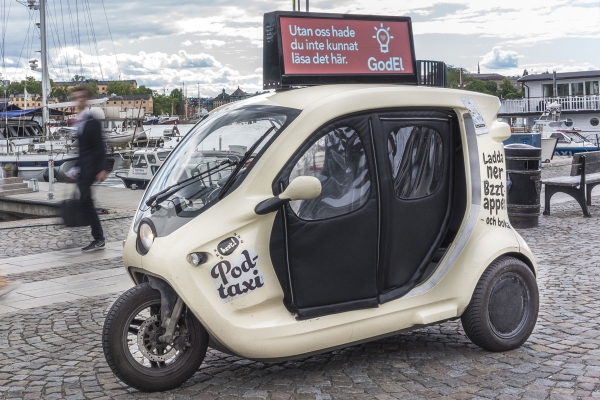Nominated innovations
1000 innovative clean energy solutions and > 150 framework enablers with the potential to deliver more than twelve gigatonnes of avoided emissions by 2030
These assessments are based on a basic avoided emission assessment. The overall concept of avoided emissions is that a solution (product or service) enables the same function to be performed with significantly less GHG emissions. The method of measuring avoided emissions, is to compare a baseline scenario without the enabling solution, with a scenario using the enabling solution; whereby the baseline represents the ‘business as usual’ (BAU) scenario.
These assessments are based on the framework document: The Avoided Emissions Framework (AEF) from September 2020

Small three-wheeler EVs for transportation
Clean Motion has developed a small, efficient vehicle. The ultra-light Zbee is three-wheeled, electric vehicle aiming to achieve high efficiency and driving economy. Clean Motion claims its front-end crash structure and three-point safety belts give it improved safety features over competing lightweight vehicles. Zbee replaces conventional cars for short distance transportation of up to three people or light cargo. The company claims that Zbee uses 7% of the energy of the average fossil-fueled city car, with speeds of up to 45 km/h. Its lean form factor and lightweight fiber reinforced plastic body allow it to be parked easily.
Sweden
≈10

Clean Motion AB
Small three-wheeler EVs for transportation
Clean Motion has developed a small, efficient vehicle. The ultra-light Zbee is three-wheeled, electric vehicle aiming to achieve high efficiency and driving economy. Clean Motion claims its front-end crash structure and three-point safety belts give it improved safety features over competing lightweight vehicles. Zbee replaces conventional cars for short distance transportation of up to three people or light cargo. The company claims that Zbee uses 7% of the energy of the average fossil-fueled city car, with speeds of up to 45 km/h. Its lean form factor and lightweight fiber reinforced plastic body allow it to be parked easily.
≈10Mt CO2e/year

Renewable gas for industrial process heat
Meva Energy provides modularized and pre-manufactured turn-key gasification systems to generate renewable industrial gas or power based on small fraction fuels. The technology converts solid biomass to renewable biogas or to combined heat and power (CHP). The plant technology offers a small-scale decentralized and circular energy system which enables gas or CHP production with very high efficiencies and a minimum of distribution and parasitic losses. The innovation was created with the intention of improving air quality, reducing fossil fuel-based emissions, improve soil quality as well as to inspire and promote renewable and circular solutions.
Sweden
≈100

Meva Energy AB
Renewable gas for industrial process heat
Meva Energy provides modularized and pre-manufactured turn-key gasification systems to generate renewable industrial gas or power based on small fraction fuels. The technology converts solid biomass to renewable biogas or to combined heat and power (CHP). The plant technology offers a small-scale decentralized and circular energy system which enables gas or CHP production with very high efficiencies and a minimum of distribution and parasitic losses. The innovation was created with the intention of improving air quality, reducing fossil fuel-based emissions, improve soil quality as well as to inspire and promote renewable and circular solutions.
≈100Mt CO2e/year

Infrastructure for next generation of wind turbines
As wind turbines increase in height, transportation poses considerable problems given that base diameters for 100+ meter towers exceed 4.3 meters and the limit for transport width in most parts of the USA and the EU. Furthermore, conventional steel tower constructions get dramatically more expensive with height due to the increasing need for thicker walls. In order to make significant returns on wind technology investments, organizations will need to drastically improve both costs and efficiency. Modvion´s module technology enables significantly decreased cost, efficient transportation and streamlined installation of towers exceeding 120 m.
Sweden

Modvion
Infrastructure for next generation of wind turbines
As wind turbines increase in height, transportation poses considerable problems given that base diameters for 100+ meter towers exceed 4.3 meters and the limit for transport width in most parts of the USA and the EU. Furthermore, conventional steel tower constructions get dramatically more expensive with height due to the increasing need for thicker walls. In order to make significant returns on wind technology investments, organizations will need to drastically improve both costs and efficiency. Modvion´s module technology enables significantly decreased cost, efficient transportation and streamlined installation of towers exceeding 120 m.
Currently unavailable

Apparel as outdoor experience services
The current short average life time of clothes and other apparel causes significant environmental damage as the production process results in significant emissions. One solution of this is to maximize the lifetime, eliminating the production need. Based on this, Houdini has developed concept based on sharing, reusing and renting apparel. To make sure their products have several owers and long life times, they have clothing repair infrastructure as part of the solution. The rental services also allows customers to have flexible state of the art clothing options. Lastly, the solution also includes locations where users can buy and sell products, resulting in less consumption.
Sweden

Houdini
Apparel as outdoor experience services
The current short average life time of clothes and other apparel causes significant environmental damage as the production process results in significant emissions. One solution of this is to maximize the lifetime, eliminating the production need. Based on this, Houdini has developed concept based on sharing, reusing and renting apparel. To make sure their products have several owers and long life times, they have clothing repair infrastructure as part of the solution. The rental services also allows customers to have flexible state of the art clothing options. Lastly, the solution also includes locations where users can buy and sell products, resulting in less consumption.
Currently unavailable

Recovery of waste air in food-producing buildings
Due to the problematic nature of waste air from food-producing buildings, such as restaurants, the ventures tend to not recover any of the high-potential air resulting from the cooking processes. As such, large amount of energy is wasted. With this is mind, Enjay has developed a solution for reusing waste energy. It works by collecting the unwanted particles (high amounts of fat and soot), while also reusing the high-potential air stream for energy. This can then be applied locally for a range of uses such as heating of spaces and water, thus saving users money while decreasing their environmental impact.
Sweden
≈10

Enjay AB
Recovery of waste air in food-producing buildings
Due to the problematic nature of waste air from food-producing buildings, such as restaurants, the ventures tend to not recover any of the high-potential air resulting from the cooking processes. As such, large amount of energy is wasted. With this is mind, Enjay has developed a solution for reusing waste energy. It works by collecting the unwanted particles (high amounts of fat and soot), while also reusing the high-potential air stream for energy. This can then be applied locally for a range of uses such as heating of spaces and water, thus saving users money while decreasing their environmental impact.
≈10Mt CO2e/year

Energy storage based on nano-coated salt
SaltX Energy Storage is a sustainable, all-natural thermo-chemical storage solution providing peak shifting. The intended market is seen as energy utilities, industrial and commercial customers. The company claims that based on its patented Nano Coated Salt (NCS) technology, SaltX is simple, scalable and cost competitive compared to traditional energy storage solutions. The solution can increase the amount of renewable energy stored in batteries. It also avoids the use of toxic chemicals and minerals used in some batteries.
Sweden

Salt-X Technology Holding AB
Energy storage based on nano-coated salt
SaltX Energy Storage is a sustainable, all-natural thermo-chemical storage solution providing peak shifting. The intended market is seen as energy utilities, industrial and commercial customers. The company claims that based on its patented Nano Coated Salt (NCS) technology, SaltX is simple, scalable and cost competitive compared to traditional energy storage solutions. The solution can increase the amount of renewable energy stored in batteries. It also avoids the use of toxic chemicals and minerals used in some batteries.
Currently unavailable

Concentration of solar power
Absolicon T160 is a solar thermal parabolic collector that concentrates sunlight to produce heat and steam with temperatures up to 160˚C. The technology works by concentrating the incoming sunlight onto a receiver tube where a heat transfer fluid is circulated. The collector is mounted on beams in groups of 4. The beams contain an active tracking system that allows the innovation to follow the sun’s movement during the day. The tracking system is designed to also protect the machinery from overheating, high winds or other harmful weather conditions.
Sweden

Absolicon Solar Collector AB
Concentration of solar power
Absolicon T160 is a solar thermal parabolic collector that concentrates sunlight to produce heat and steam with temperatures up to 160˚C. The technology works by concentrating the incoming sunlight onto a receiver tube where a heat transfer fluid is circulated. The collector is mounted on beams in groups of 4. The beams contain an active tracking system that allows the innovation to follow the sun’s movement during the day. The tracking system is designed to also protect the machinery from overheating, high winds or other harmful weather conditions.
Currently unavailable

Mobile car wash
Through the Woshapp app, Woshapp takes the car wash to the car and reduces the amount of water needed for each wash. The company goal is to revolutionize the way we clean cars using sustainable and environmentally friendly methods. On average it takes 1.5 hours to wash a car and in addition about 200 liters of water are consumed per wash. Woshapp service agents cycle to the car and carefully hand wash it in an environmentally friendly way, using only about 400 milliliters of water per wash, thereby saving 99% of the water consumed by a regular car wash. The method provides better quality than a mechanical car wash, avoiding the scratches that can occur.
Sweden
≈1

Woshapp
Mobile car wash
Through the Woshapp app, Woshapp takes the car wash to the car and reduces the amount of water needed for each wash. The company goal is to revolutionize the way we clean cars using sustainable and environmentally friendly methods. On average it takes 1.5 hours to wash a car and in addition about 200 liters of water are consumed per wash. Woshapp service agents cycle to the car and carefully hand wash it in an environmentally friendly way, using only about 400 milliliters of water per wash, thereby saving 99% of the water consumed by a regular car wash. The method provides better quality than a mechanical car wash, avoiding the scratches that can occur.
≈1Mt CO2e/year

Electric three-wheeler city taxi
Bzzt Taxi Pods provides an app-based taxi service in urban areas through the use of small electrically powered 3-wheel taxis at the price point of public transport and with zero local emissions. All the taxi pods in the fleet are Light Electrical Vehicles and the fleet operation is optimized with an inhouse software. Onwards, the fleet could also serve as a flexible and low emission alternative for last mile urban deliveries.
Sweden
≈100

Bzzt
Electric three-wheeler city taxi
Bzzt Taxi Pods provides an app-based taxi service in urban areas through the use of small electrically powered 3-wheel taxis at the price point of public transport and with zero local emissions. All the taxi pods in the fleet are Light Electrical Vehicles and the fleet operation is optimized with an inhouse software. Onwards, the fleet could also serve as a flexible and low emission alternative for last mile urban deliveries.
≈100Mt CO2e/year

Flexible inverter for smart power systems
Ferroamp have developed a flexible inverter called ‘EnergyHub’ that enables a flexible integration of photo voltaic systems, energy storage, small-scale wind and electric car charging. This makes it possible to utilize the consumption variations between buildings while also cutting power peaks during times of high consumption. The solution can convert the power between AC and DC with minimal losses compared to traditional systems. Furthermore, EnergyHub can be scaled and connected between buildings and are applicable for all levels of effect needed.
Sweden

Ferroamp Elektronik AB
Flexible inverter for smart power systems
Ferroamp have developed a flexible inverter called ‘EnergyHub’ that enables a flexible integration of photo voltaic systems, energy storage, small-scale wind and electric car charging. This makes it possible to utilize the consumption variations between buildings while also cutting power peaks during times of high consumption. The solution can convert the power between AC and DC with minimal losses compared to traditional systems. Furthermore, EnergyHub can be scaled and connected between buildings and are applicable for all levels of effect needed.
Currently unavailable